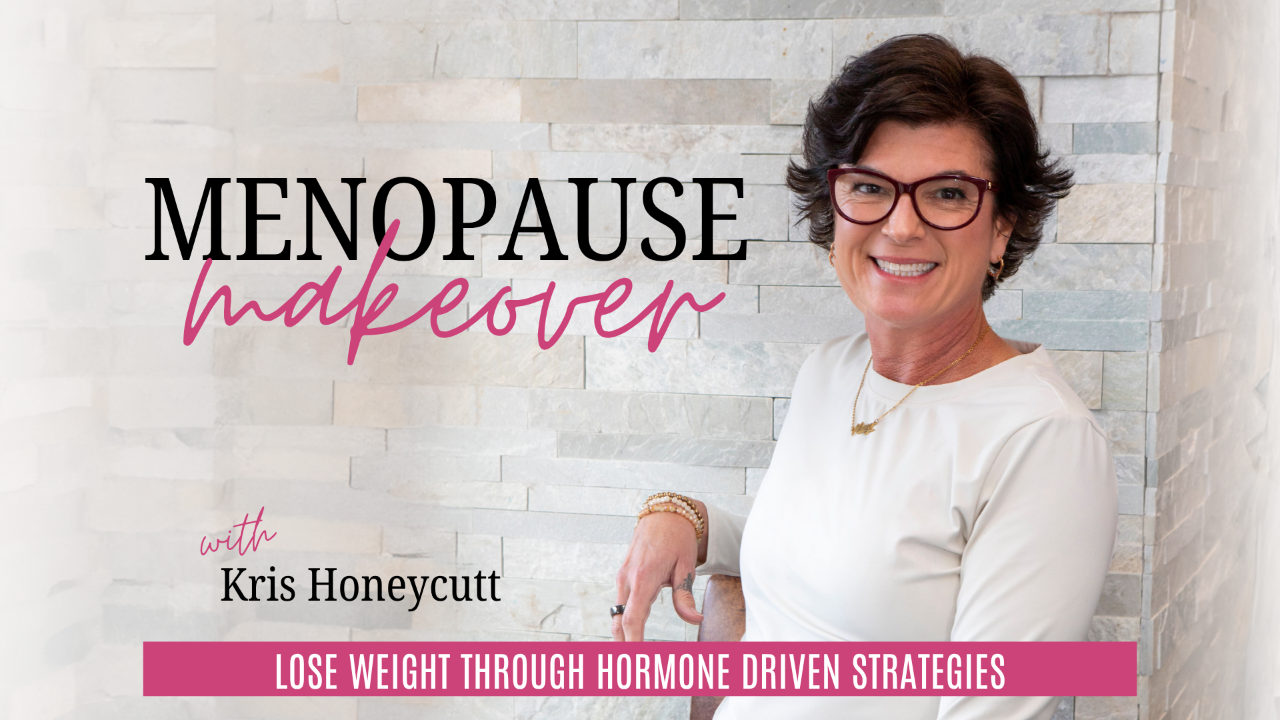3 Reasons You’re Not Losing Weight After 40 Even If You Exercise Daily

Apple Podcast - Spotify - YouTube
If you’ve been doing all the “right things”—eating healthy, moving your body, staying on plan—and still can’t lose that stubborn belly fat, I see you, friend. It’s one of the most common frustrations I hear from women in midlife:
“Kris, I’m exercising every day, but my body just isn’t responding anymore.”
The truth? It’s not that you’re not trying hard enough. It’s that your body has changed. The same workouts and routines that once worked in your 30s may now be keeping you stuck.
Let’s unpack why—and how you can start seeing results again, without living at the gym.
Why What Used to Work Doesn’t Work Anymore
When estrogen begins to decline in perimenopause and menopause, it affects everything from how your body stores fat to how efficiently it builds muscle.
Estrogen used to help regulate insulin and protect your muscle tissue. When it drops, your metabolism slows, and your body becomes less sensitive to insulin. Translation? You store more fat—especially around your midsection—and have to work harder to maintain lean muscle.
But here’s the kicker: working harder isn’t the answer. Working smarter is.
So if you’ve been grinding away on the treadmill, walking for hours, or logging miles on your bike and not seeing the scale move, it’s not your fault. You’re simply doing the wrong type of exercise for this season of life.
1. You’re Relying on Long, Steady-State Cardio
Steady-state cardio—what fitness pros call Zone 2 training—has long been praised as the “fat-burning zone.” You know the kind: long walks, gentle jogs, or extended cardio classes where you can still carry on a conversation.
And while it’s great for your heart health, it’s not great for your hormones.
Your midlife body needs a new stimulus to adapt. Long bouts of moderate-intensity exercise don’t challenge your muscles or mitochondria enough to trigger the changes that boost fat burning and metabolism.
You’re already built for endurance. Women naturally have more mitochondria and better fat oxidation than men. So to create real change in midlife, you need intensity—not endless cardio.
In short: Long cardio helps your heart but does very little for belly fat or hormone balance.
2. You’re Missing the Intensity Your Body Needs
When estrogen drops, your body’s natural fat-burning signals slow down. To reignite that metabolism, you need workouts that force adaptation—short bursts of higher intensity followed by full recovery.
This is where HIIT (High-Intensity Interval Training) and SIT (Sprint Interval Training) shine. These workouts train your body to burn fat more efficiently, improve insulin sensitivity, and build lean muscle—all of which are critical for fat loss after 40.
In a HIIT session, you might work hard for 45 seconds, then rest for 45. With SIT, you go all-out for 20–30 seconds, then rest 2–3 minutes. The key is that your heart rate comes back down before you start again. That recovery window is where the magic happens.
You don’t need hours of HIIT—just two sessions per week is enough to boost fat-burning, preserve muscle, and protect your metabolism.
“We need intensity,” I tell my clients. “It’s not about working longer—it’s about working smarter.”
Quick Guidelines for Effective HIIT or SIT Training:
- Work hard, rest fully: Push to 85–90% of your effort, then recover completely.
- Start small: Begin with two intervals, then work your way up each week.
- Recover well: Overdoing it raises cortisol and stalls fat loss.
- Mix it up: Try jump rope, hill sprints, or bike sprints if running isn’t your thing.
3. You’re Not Recovering Enough
This is a big one, especially for my midlife ladies who are go-getters. If you’re constantly pushing without rest, your body is running on cortisol—and cortisol is a fat-storage hormone.
You can’t burn fat when your body thinks it’s in survival mode.
Recovery isn’t lazy—it’s necessary. Rest days are when your muscles rebuild, your hormones rebalance, and your metabolism resets.
So if you’ve been following those 20-second Tabata workouts from your 30s and wondering why you feel exhausted instead of energized, it’s because your body now needs more recovery between efforts.
“Recovery is key,” I say often. “If you don’t let your body recover, you’ll raise cortisol and work against your muscle mass.”
Give yourself permission to rest. It’s the most underrated fat-loss strategy out there.
The Bonus Benefit: It’s Not Just Your Body That Changes
Here’s my favorite part: when you train this way, your brain benefits, too.
Research shows that HIIT improves executive function, decision-making, and focus—yes, even in menopause. It increases a powerful brain chemical called BDNF (brain-derived neurotrophic factor), which acts like fertilizer for your brain—supporting learning, mood, and memory.
So while you’re burning fat and building muscle, you’re also protecting your brain long-term.
How to Put It All Together
Here’s how I recommend my clients integrate it:
- Strength train 2–3 times per week to build muscle and improve insulin sensitivity.
- Add 2 HIIT or SIT sessions per week on non-strength days (or as short finishers).
- Walk daily for recovery, circulation, and hormone balance.
- Rest intentionally to keep cortisol low and hormones stable.
This rhythm supports the Trim Healthy lifestyle beautifully—it’s sustainable, hormone-friendly, and completely doable even in your busiest season.
You’re not broken, friend. You’re just in a new season that requires a smarter approach.
If you’re still doing endless cardio and wondering why your belly fat won’t budge, it’s time to flip the script.
Swap “more” for “better.” Add intensity where your body needs it. Rest where your hormones require it. And remember—every smart step you take today is an investment in your strong, vibrant, and fat-burning future self.
You’ve got this.
Want help building a personalized plan to lose belly fat and balance your hormones?
Book a 1:1 Discovery Call with Coach Kris >> https://www.getyourtrimon.com/work-with-kris



